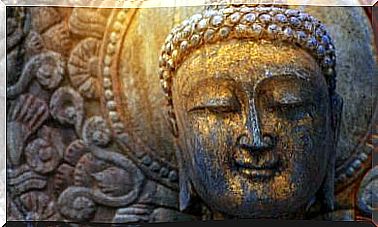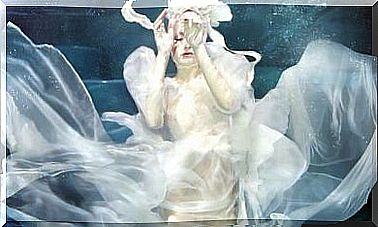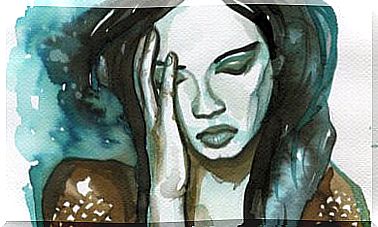Mandalas: 5 Benefits
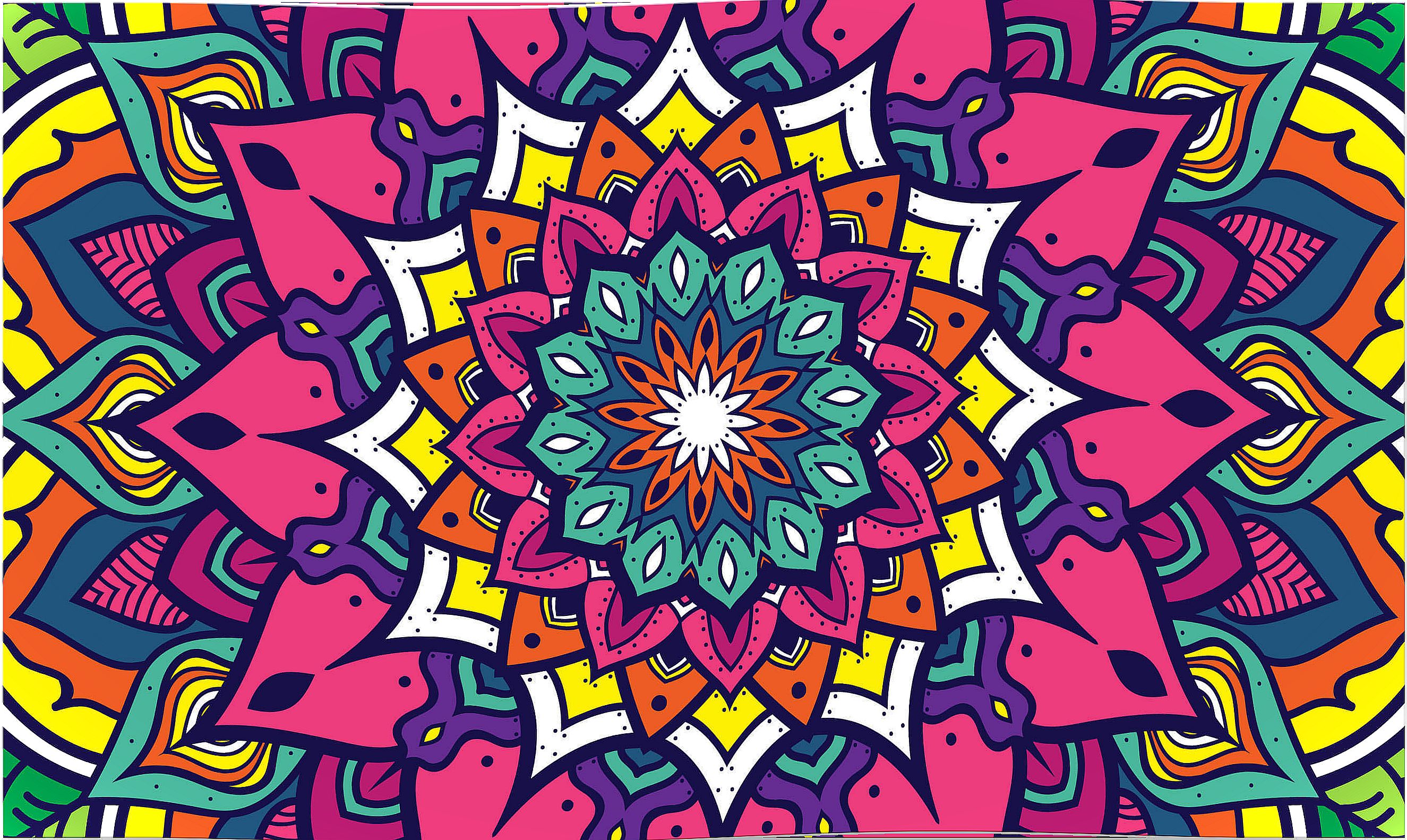
The word mandala comes from Sanskrit and means ‘sacred circle’. These representations in the form of circles are used in different cultures, such as Buddhist, Hindu, Christian and in some indigenous tribes, as an artistic element or a means for the person to find himself.
According to the beliefs of some cultures, mandalas are related to the energies of life. For example, in Eastern cultures it is believed that each color is associated with a chakra . These energy centers are connected with our being and with the environment and promote well-being. Therefore, mandalas by containing them also favor it. They are a wonderful legendary technique that brings us multiple benefits.
Mandalas bring relaxation
Designing and coloring mandalas helps to focus attention, therefore they are an excellent exercise to calm the feeling of stress and clear our mind. Some of the benefits of mandalas are as follows:
- They facilitate balance.
- They bring peace and serenity.
- Contemplating them favors a feeling of tranquility.
- They help concentration.
- They facilitate mindfulness.
- They allow thoughts to be put aside and creativity to flow.
- The arrangement of the figures conveys a sense of balance.
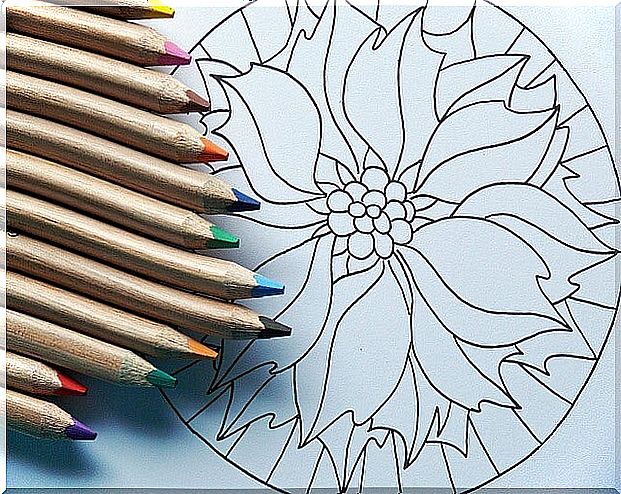
Mandalas are designed to free us from worries because they favor concentration in the present, which is why they are a powerful relaxation tool.
Deep connection
Mandalas make it easier for us to connect with what is most intimate of us, thus promoting self-knowledge. They are a wonderful exercise in reflection on our place in the world and the relationship we have with others.
On the other hand, mandalas are a form of meditation that help us focus our attention. In this way, they promote harmony, since energies flow through their shapes and colors, transforming negative aspects into positive ones, bringing balance to our lives.
Do not forget that the arrangement of the mandalas is from the center to the outside, which allows the person to connect, release, rebuild and relate. All this through projection through the selection of colors and figures.
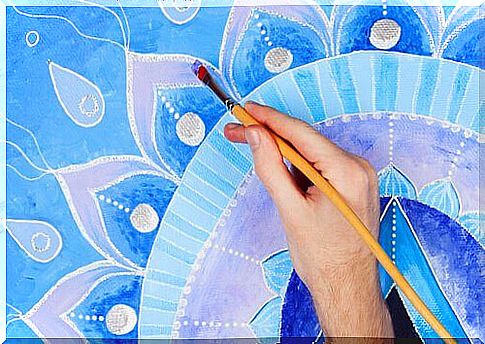
Creativity and mandalas
Mandalas are an artistic representation of free design, that is, we can draw them as we want. Now, if we don’t feel like designing them, we can also buy books and notebooks to color them. As we can see, there are many options.
An interesting aspect of mandalas is that they are related to creativity because they allow you to use colors and shapes with total freedom. In other words, they facilitate the creative process and are a source for generating new ideas. In addition, each shape and color represent unconscious aspects of the person. Some of its meanings are as follows:
- Red. Passion, sensuality, strength, power and aggressiveness. First chakra.
- Orange. Pleasure, glory, vanity, progress and energy. Second chakra.
- Yellow. Joy, will and novelty. Third chakra.
- Green. Hope, carefree and nature. Fourth chakra.
- Blue. Tranquility, seriousness, respect and communication. Fifth chakra.
- Violet. Meditation, creativity and oscillation. Sixth chakra.
- White. Peace, harmony, kindness, delicacy and shyness. Seventh chakra.
- Black. Depth, mystery, authority, dignity, security, sadness and mourning.
- Circle. Dynamism and connection with the cosmos.
- Cross. Unconscious and conscious, union of heaven and earth.
- Triangle. Transformation and vitality.
- Square. Stability and balance.
- Labyrinth. Search for the center itself.
Mandalas to decorate
Mandalas can also be used to decorate our home or workplace. Some decorative ideas are as follows:
- Paint mandalas on stones and use them as ornamental objects.
- Weave a mandala and use it as a blanket.
- Put a mandala tapestry on the wall.
- Make decorative pictures.
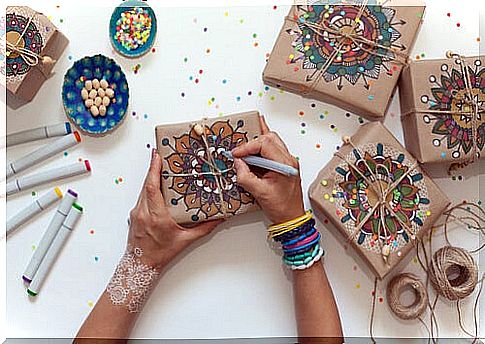
Therapeutic benefits of mandalas
Mandalas have been recognized in psychology as a therapeutic element. The Swiss psychologist Carl Jung proposed that they are representations of our mind that facilitate concentration, transformation and assimilation of unconscious aspects. He suggested that we can project what we feel and think to the mandalas.
Also, different branches of psychology have spoken of its benefits. Transpersonal psychology views mandalas as an exercise to foster deep connection. And cognitive and behavioral psychology as a tool to improve higher functions such as memory, attention, perception, and visual-motor coordination.
These representations are used in other areas as well. For example, in occupational therapy, since through cognitive stimulation they favor performance in daily activities. In addition, they are used in educational settings to facilitate concentration, attention, and discipline.
As we can see, there are many benefits that we can obtain through mandalas. These artistic representations are a source of relaxation, liberation and have a deep creative power. Why not try them?
Bibliographic references
Añaños, E., Estaún, S., Tena, D., Mas, TM, and Valli, A. (2008). Psychology and advertising communication. Barcelona, Spain: Bellaterra.
Dahlke, R (2004). Mandalas, how to find the divine in you. A book to find meditation and drawing and coloring the different mandalas. Barcelona, Spain: Robbin Book.
Martínez Cruz, MC (2008). The mandalas: those great strangers, 1 (3), 1-7.

